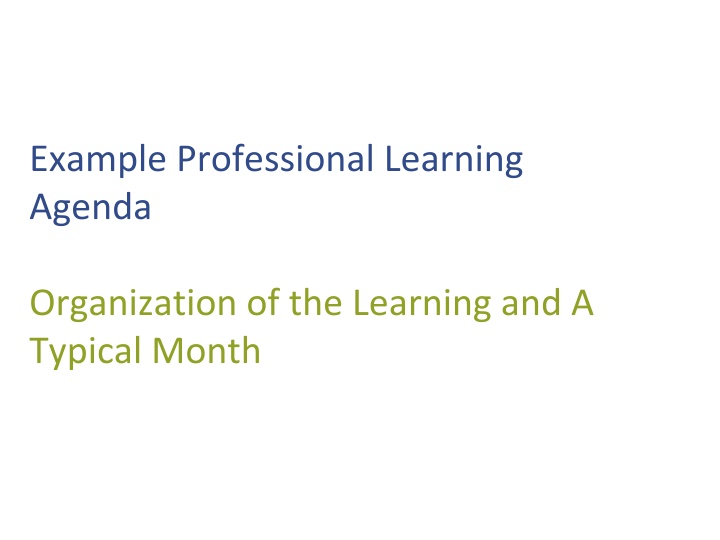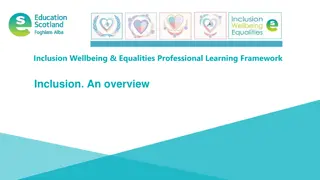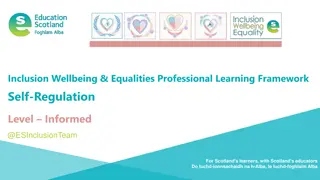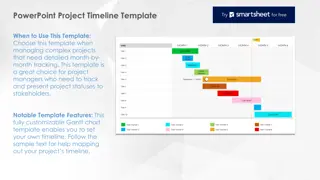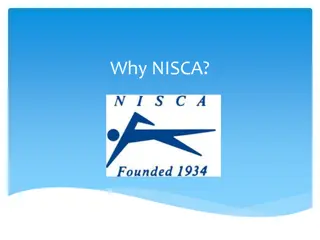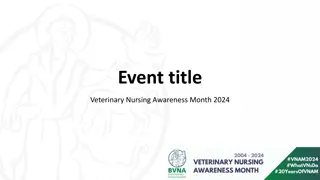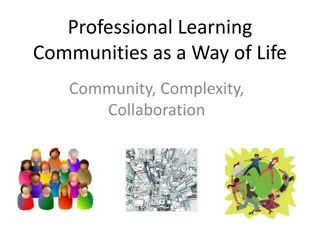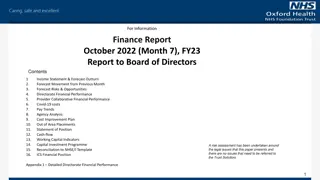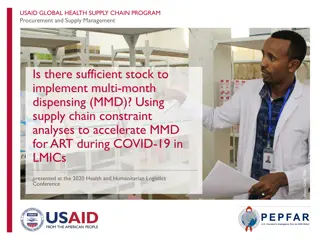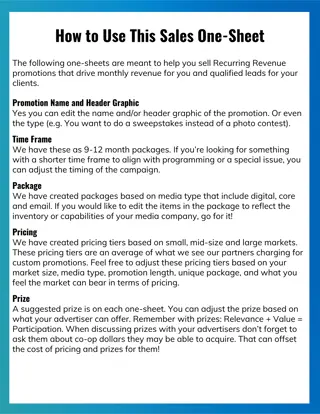Professional Learning Agenda Organization & Typical Month Activities
Team members can expect regular professional learning activities in various venues, including asynchronous learning, cohort experiences, small group reflections, and firmwide learning. Prioritized learning questions focus on creating a safe environment for dissenting opinions, continuous improvement culture, and diversity and inclusion. Learning objectives for 2020-21 include understanding psychological safety, applying continuous improvement, and foundational change management principles.
Download Presentation

Please find below an Image/Link to download the presentation.
The content on the website is provided AS IS for your information and personal use only. It may not be sold, licensed, or shared on other websites without obtaining consent from the author.If you encounter any issues during the download, it is possible that the publisher has removed the file from their server.
You are allowed to download the files provided on this website for personal or commercial use, subject to the condition that they are used lawfully. All files are the property of their respective owners.
The content on the website is provided AS IS for your information and personal use only. It may not be sold, licensed, or shared on other websites without obtaining consent from the author.
E N D
Presentation Transcript
Example Professional Learning Agenda Organization of the Learning and A Typical Month
Team members can expect a regular cadence of professional learning activities across these four venues Venue Description Additional Details Asynchronous learning that could including reading, listening and/or reflection All asynchronous learning will be in support of cohort and firmwide learning experiences Individual Small groups of team members engaging in multiple, shared learning and reflection experiences Cohorts will be identified using multiple factors, including role-group and years of experience Cohort These experiences will take place during all-staff meetings. Both full group and small group learning experiences will be included Organization The entire staff engaging in learning together -wide We recognize that we are all humans living through a pandemic. If you have questions or concerns about the cadence of professional learning, please reach out!
Prioritized Learning Questions for October 2020-September 2021 STRAND 1: FOUNDATIONAL How can we create a culture in which all staff feel safe to share dissenting opinions and take risks? STRAND 2: CHANGE MANAGEMENT How can we build and sustain a culture of continuous improvement? How can we support staff to work through and manage change? STRAND 3: DIVERSE AND INCLUSIVE ENVIRONMENT How can we build an emerging understanding of diversity, equity and inclusion at x org?
2020-21 learning objectives Learn about the importance of psychological safety in building and maintaining effective teams Learn how to foster psychological safety as an individual, on your teams and in the organization as a whole Explore how race, identity, power dynamics contribute to or limit psychological safety Learn about principles for improvement and a continuous improvement (CI) approach (e.g. Plan- Do-Study-Act) Describe the phases of CI and the benefits of its application Apply CI approach to a previous project and reflect on what might have changed in the scenario if the team had applied CI Discuss the ways in which CI are interconnected with the organization s approach to project management Practice applying CI in a new or current project Reflect on the experience of applying CI in your teams Identify what you should keep doing, stop doing and start doing as a result of your practice with CI Understand foundational change management principles Use the language of SWITCH to understand how change efforts succeed and fail Explore the role of staff members, across all roles, in change efforts Practice applying change management principles on one of your teams Reflect on the experience of applying a change management principle with your teams Identify what you should keep doing, stop doing and start doing as a result of your practice with change management What do we mean by diversity, equity, and inclusion? What does DEI look and feel like at x org? Define key DEI concepts and begin to adopt a shared vocabulary Learn new ways of listening Learn about the power of listening in building empathy and inclusive environments Reflect on how our identities and biases shape our lens as individuals and as an organization As we finalize timing, we will share the week-by-week scope and sequence details
These concepts and the learning will be woven together to support your ability to contribute in meaningful ways PSYCHOLOGICALLY SAFE ORG INDIVIDUALS CONTRIBUTE TO A THRIVING CULTURE AND DELIVER EXCEPTIONAL SOLUTIONS ORG THAT EMBEDS A CULTURE OF CONTINUOUS IMPROVEMENT WHERE STAFF ARE SUPPORTED TO WORK THROUGH ORG THAT COMMITS TO AND BEGINS TO EMBODY ITS DEI ASPIRATIONS CHANGE
Well learn and practice discrete skills that also contribute to the culture and ways of working we aspire to. For example: Importance of psychological safety and how to foster it Listening Building inclusive teams Understanding the role of bias and identity Creating psychological safety as a condition for taking risks, trying new approaches and innovating Creating the conditions and building the skills to navigate and help others navigate change PSYCHOLOGICALLY SAFE ORG Shared DEI vocabulary Exploring identity Unpacking bias ORG THAT EMBEDS A CULTURE OF CONTINUOUS IMPROVEMENT WHERE STAFF ARE SUPPORTED TO WORK THROUGH ORG THAT COMMITS TO AND BEGINS TO EMBODY ITS DEI ASPIRATIONS CHANGE Understanding the role of identity and bias in change efforts Creating inclusive environments that enable change and continuous improvement Learn principles for improvement and a practice a continuous improvement approach Understand foundational change management principles and apply SWITCH methodology
Heres what a typical month will look like Weeks Venues Objectives Activities Learn about learning agenda design, approach and expectations Learn about the importance of psychological safety in building and maintaining effective teams Organization- wide (All- staff meeting) Introduction to cohorts; share design and expectations for meeting and completing activities Learn about psychological safety Week 1 Review actions that increase psychological safety and reflect: What are my contributions to safety on the teams I contribute to or manage? What one new action will I take to improve safety on my team? Explore your current contribution to safety on your teams Individual Week 2 Practice a new action to improve safety Practice employing that one new action this week and make notes of how it goes Week 3 Individual Begin to build connections with your cohort Reflect on ways in which you can contribute to supporting a psychologically safe team Connector activity Cohort members share their experiences of psychological safety on teams and the results of the new actions they took in week 3 Week 4 Cohort
